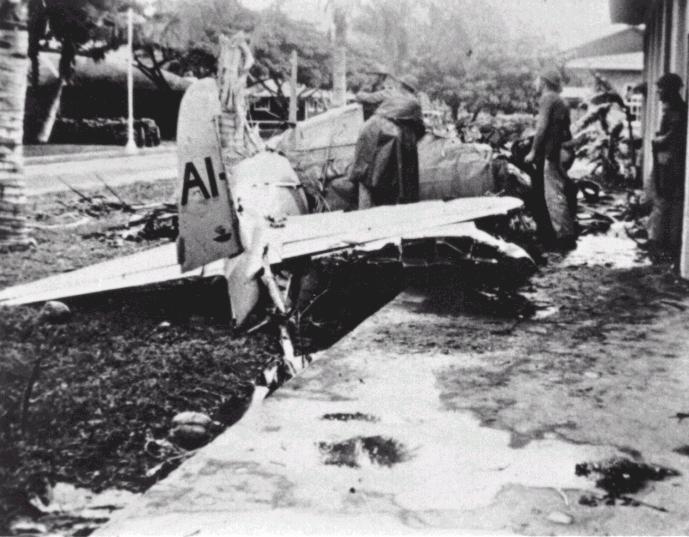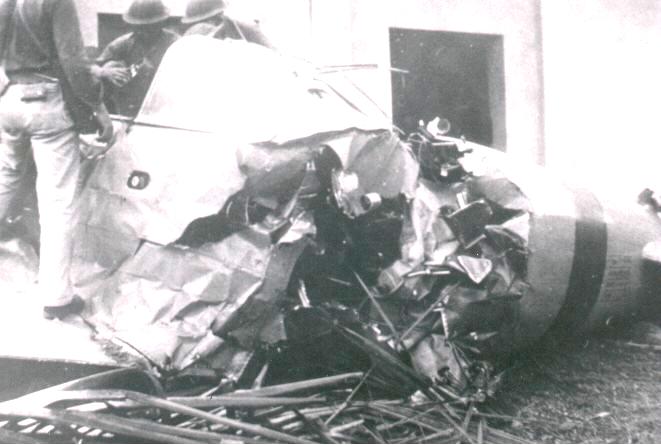 During continued research into the Kam Zero crash site, contact was made with David Aiken, a historian who has documented every Japanese plane lost during the Pearl Harbor attack. He provided additional images of the official investigation conducted the day after the attack, taken from several angles. These views show several US Army personnel grouped around the cockpit. The view to the left shows the Kam Zero from the same vantage point as the second Fuselier photo taken the day before. Note that while the Zero is in the same position, the palm branches have been cleared away, the canopy has been removed and there is much more fluid (possibly fuel leaking from ruptured tanks) along the loading dock.
During continued research into the Kam Zero crash site, contact was made with David Aiken, a historian who has documented every Japanese plane lost during the Pearl Harbor attack. He provided additional images of the official investigation conducted the day after the attack, taken from several angles. These views show several US Army personnel grouped around the cockpit. The view to the left shows the Kam Zero from the same vantage point as the second Fuselier photo taken the day before. Note that while the Zero is in the same position, the palm branches have been cleared away, the canopy has been removed and there is much more fluid (possibly fuel leaking from ruptured tanks) along the loading dock.
 The photo to the right shows the investigators examining the Kam Zero cockpit area. David Aiken states that interviews with the surviving investigators revealed that they were removing Hirano's body when this photo was taken. These official photographs, together with the Fuselier photos, show rather conclusively that the site of the crash was not a residence, but an industrial building with a long concrete loading dock.
The photo to the right shows the investigators examining the Kam Zero cockpit area. David Aiken states that interviews with the surviving investigators revealed that they were removing Hirano's body when this photo was taken. These official photographs, together with the Fuselier photos, show rather conclusively that the site of the crash was not a residence, but an industrial building with a long concrete loading dock.
The 1922 map shows the Ordnance Machine Shop location at the eastern end of the Fort Kam barracks area near Battery Selfridge, well removed from the officer's quarters. None of the buildings in the barracks area are still standing, and the site of the Ordnance machine Shop is now covered by the Hawaii Air National Guard ramp. There is no evidence that any of the quarters were damaged on December 7th. While the ultimate fate of Quarters #1 is unknown, its demolition was most probably for much more prosaic reasons than battle damage. As for the Kam Zero itself, it was removed to a hanger at Hickam Airfield a few days after the attack for further examination. According to various sources, it was shipped back to Wright-Patterson Airfield OH for detailed analysis. A fragment allegedly from the Kam Zero data stencil is now in the Lee County Historical Society Museum in Loachapoka, AL.

